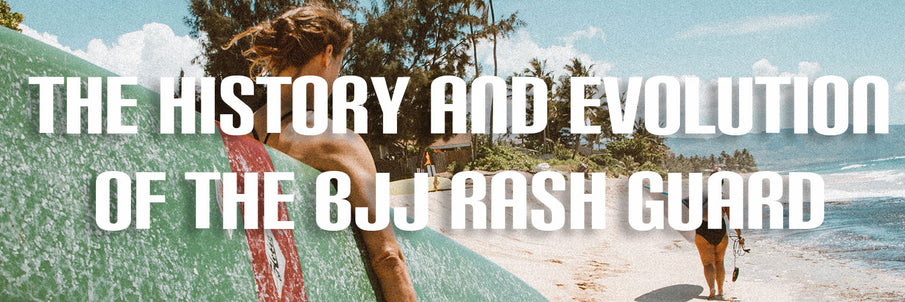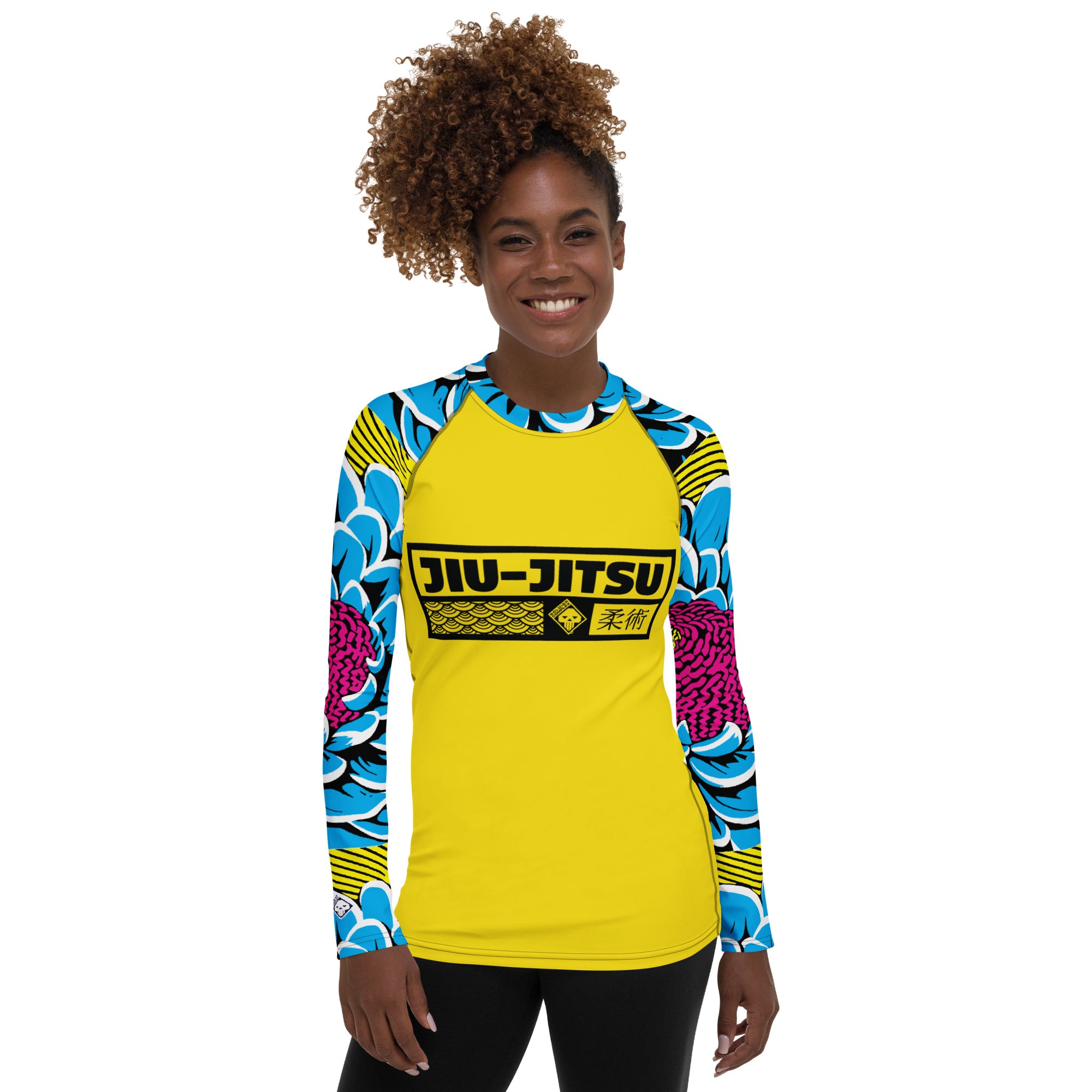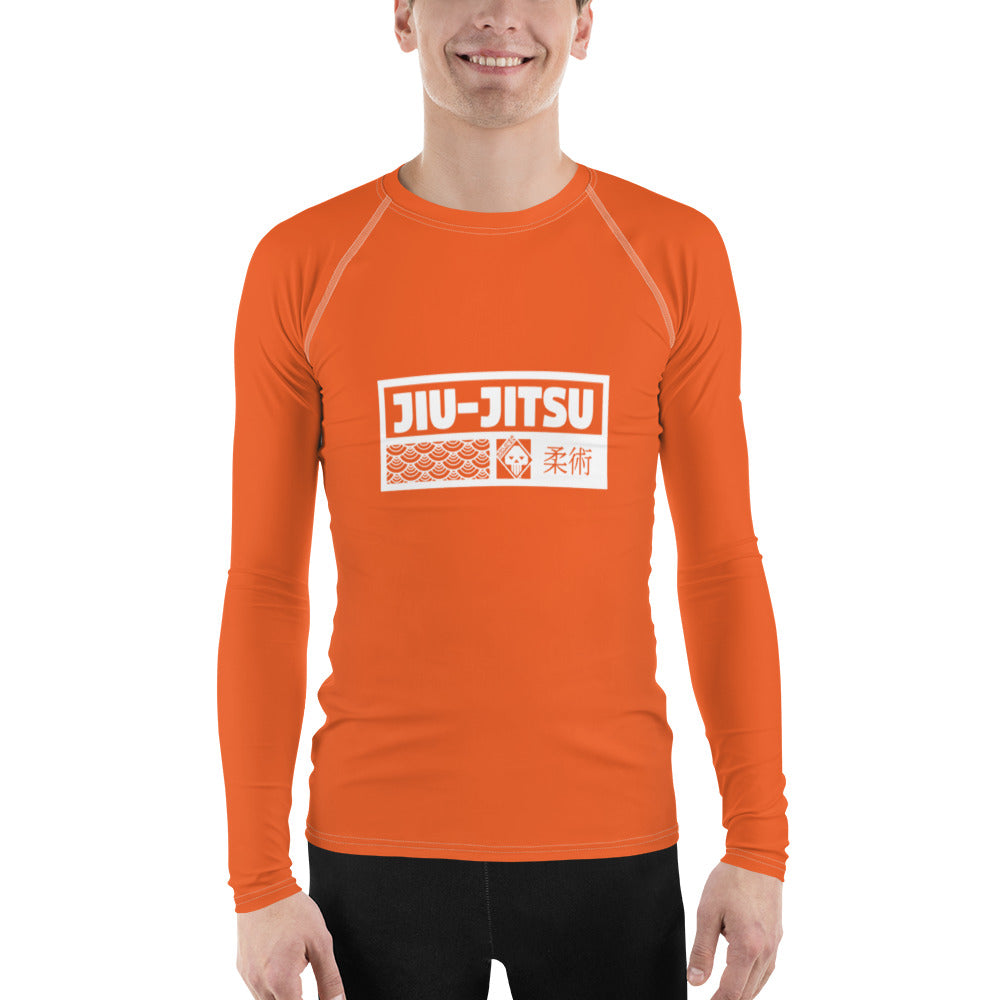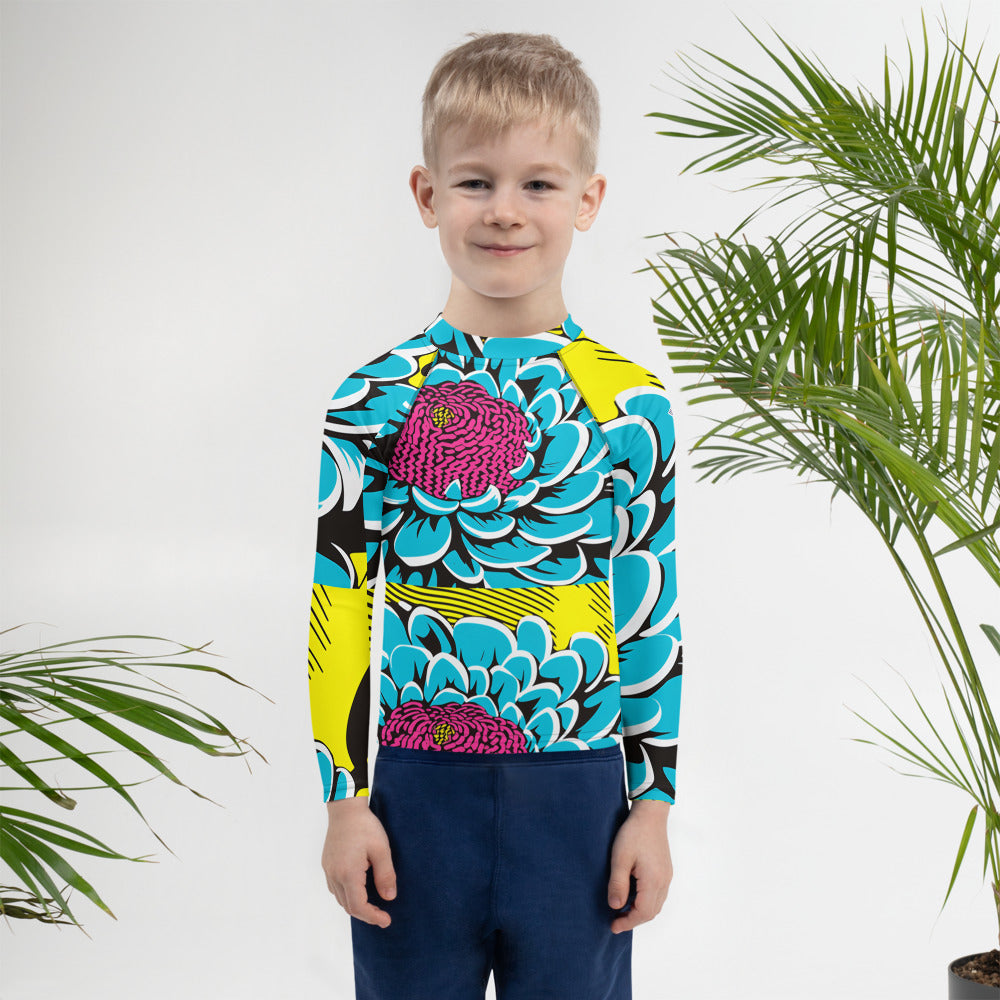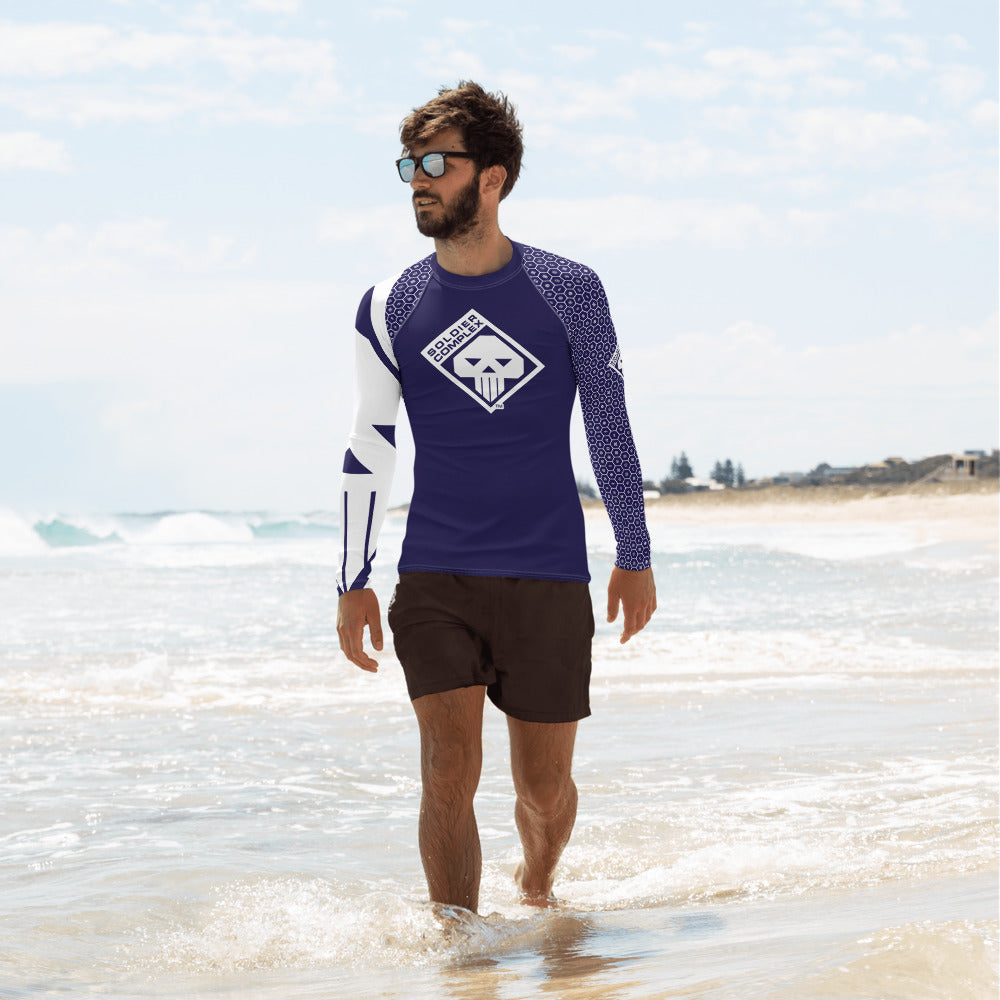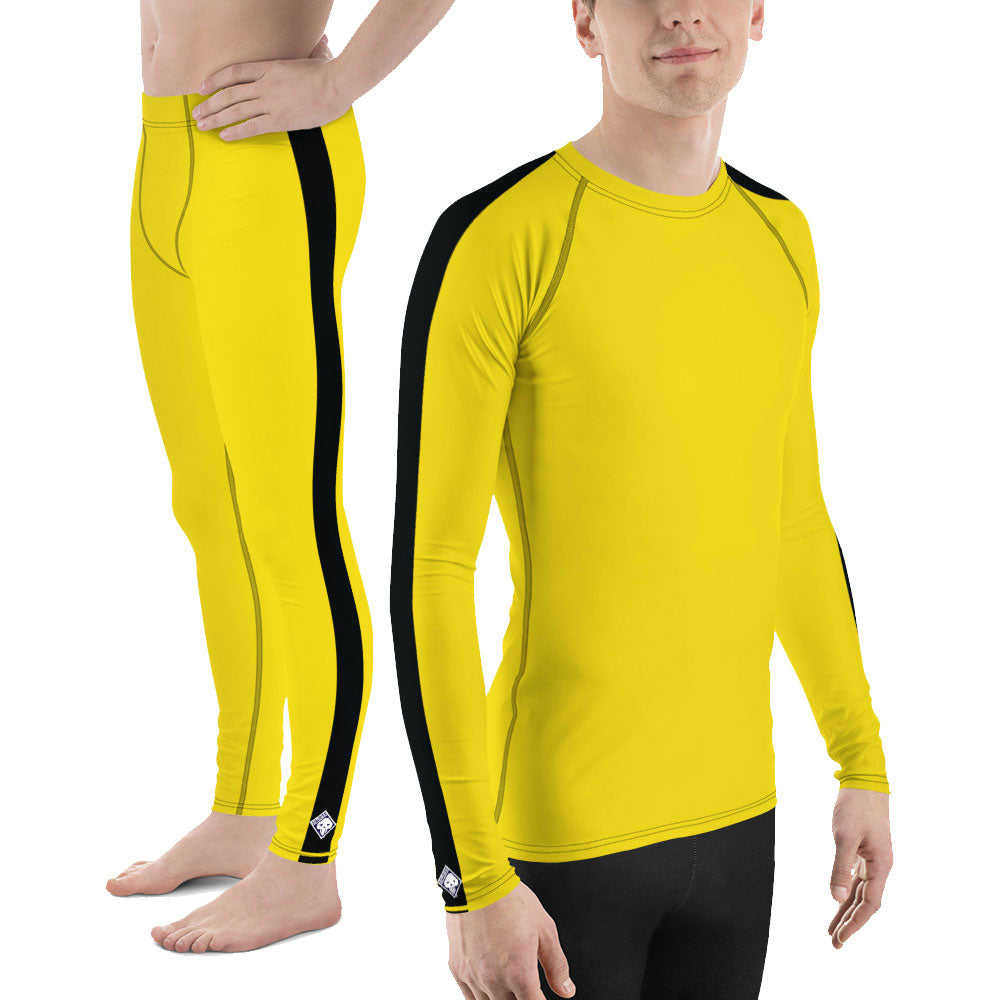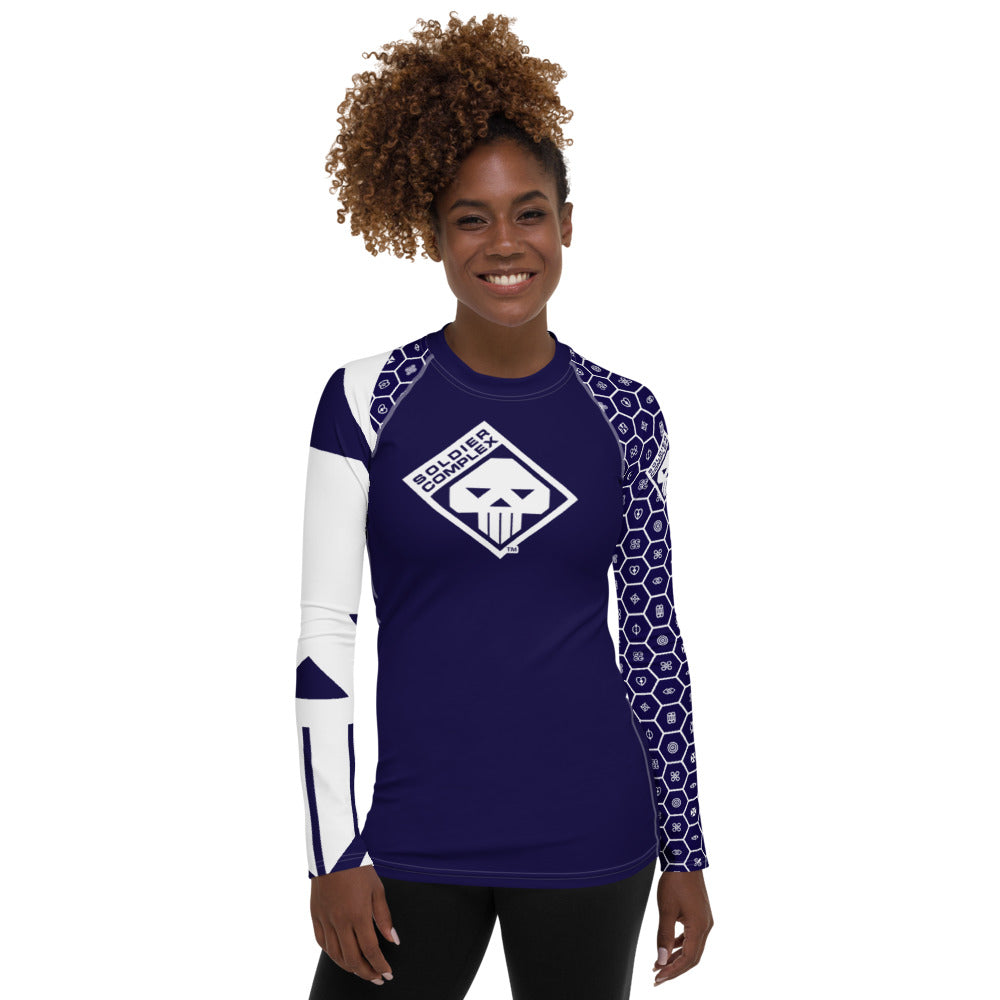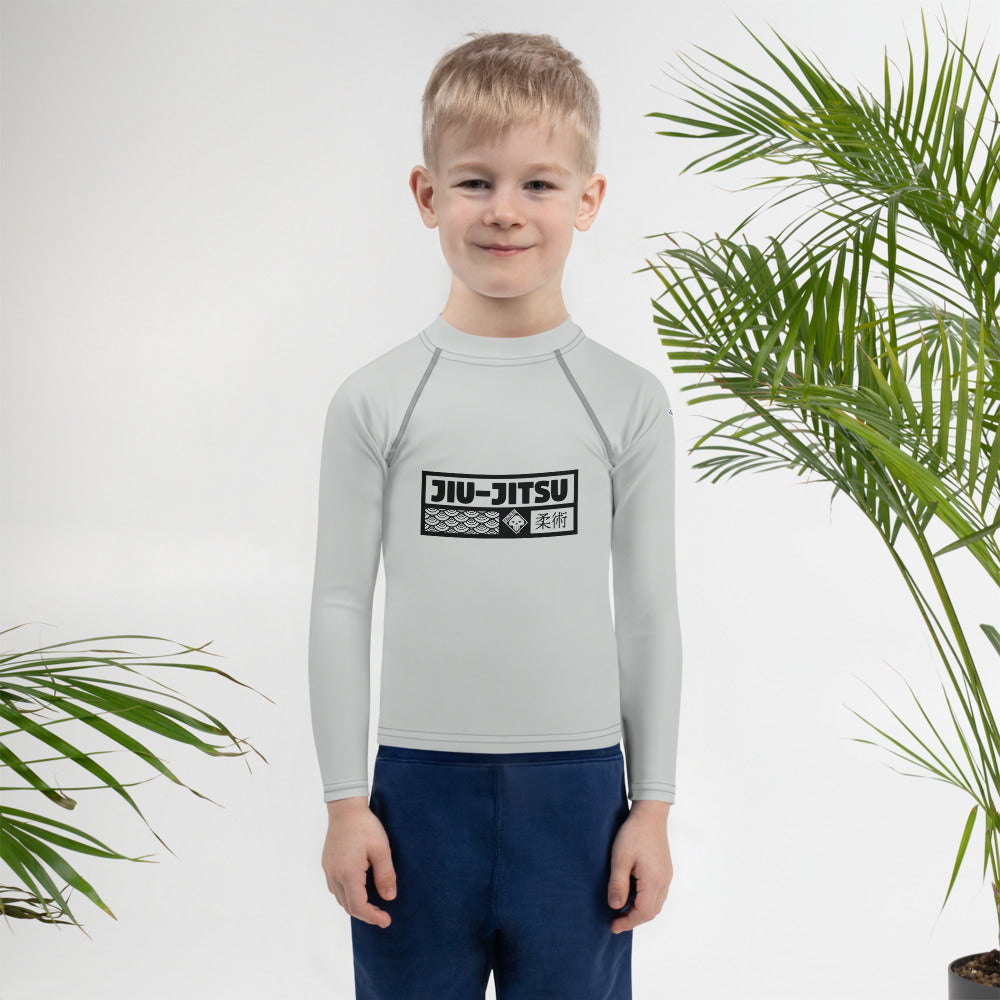The History and Evolution of the BJJ Rash Guard
I. Introduction
The Role of Rash Guards in Brazilian Jiu-Jitsu (BJJ)
Brazilian Jiu-Jitsu (BJJ) is a martial art and combat sport known for its emphasis on grappling and ground fighting techniques. Originating from judo and traditional jiu-jitsu, BJJ focuses on leveraging technique and leverage to control opponents and force them into submission holds or joint locks. In this dynamic sport, practitioners frequently find themselves in close contact with their training partners or opponents, often leading to friction burns, abrasions, and skin infections. Rash guards play a vital role in BJJ by providing a protective layer against such hazards. These tight-fitting garments not only reduce the risk of skin irritation and mat burns but also offer moisture-wicking properties to keep athletes dry and comfortable during training sessions. Additionally, rash guards can prevent the spread of bacteria and fungi, promoting hygiene and minimizing the risk of skin infections. As a staple piece of equipment in BJJ, rash guards are essential for ensuring the safety, comfort, and performance of practitioners on the mats.
Exploring the Evolution of the BJJ Rash Guard
The history and evolution of the BJJ rash guard are fascinating aspects of the sport's development over the years. Originally, Brazilian Jiu-Jitsu (BJJ) practitioners often trained shirtless or wore traditional martial arts uniforms known as "gis." However, as the sport evolved and gained popularity worldwide, athletes began to recognize the need for specialized attire that offered both protection and performance benefits during training and competition. This led to the development of the rash guard—a tight-fitting, moisture-wicking garment designed to reduce friction, prevent mat burns, and promote hygiene on the mats. Over time, the BJJ rash guard has undergone various iterations, with advancements in materials, construction, and design to meet the evolving needs of athletes. Today, the rash guard has become an essential piece of equipment in BJJ, reflecting the sport's commitment to innovation, functionality, and safety.
The Significance of Rash Guards in Brazilian Jiu-Jitsu (BJJ)
Rash guards play a pivotal role in Brazilian Jiu-Jitsu (BJJ) by providing essential protection, promoting hygiene, and enhancing performance on the mats. Firstly, rash guards act as a barrier against abrasions, mat burns, and friction-related injuries during grappling exchanges, shielding the skin from potential harm. Additionally, rash guards feature moisture-wicking properties that help to keep athletes dry and comfortable by efficiently managing sweat and moisture during intense training sessions. This not only reduces the risk of skin irritation and discomfort but also promotes overall hygiene on the mats. Furthermore, the compression fit of rash guards offers muscle support, improves circulation, and reduces muscle fatigue, allowing athletes to train with greater efficiency and endurance. By combining protection, hygiene, and performance benefits, rash guards have become indispensable gear for practitioners of Brazilian Jiu-Jitsu, ensuring a safer, more comfortable, and more productive training experience.
II. Early Origins of Rash Guards in BJJ
Early Adoption of Rash Guards in Brazilian Jiu-Jitsu (BJJ)
The adoption of rash guards in Brazilian Jiu-Jitsu (BJJ) training and competition has evolved significantly since its early days. Initially, BJJ practitioners trained shirtless or wore traditional martial arts uniforms known as "gis" during training sessions and competitions. However, as the sport progressed and athletes sought ways to enhance their performance and safety on the mats, the use of rash guards became increasingly prevalent. Rash guards provided a layer of protection against abrasions, mat burns, and friction-related injuries, particularly during intense grappling exchanges. Moreover, the moisture-wicking properties of rash guards helped to manage sweat and moisture, keeping athletes dry and comfortable throughout their training sessions. Over time, the adoption of rash guards in BJJ has become widespread, reflecting their importance in promoting hygiene, protection, and performance on the mats.
The Evolution of Rash Guards: Adoption from Other Martial Arts and Sports
The adoption of rash guards in various martial arts and sports has a rich historical context that extends beyond Brazilian Jiu-Jitsu (BJJ). Originally popularized in activities like surfing and water sports for their ability to protect against rashes and abrasions, rash guards gradually found their way into the realm of martial arts. With their moisture-wicking properties and tight-fitting design, rash guards proved to be versatile garments suitable for a wide range of physical activities. In the context of BJJ, the adoption of rash guards was influenced by the need for protective gear that could withstand the rigors of intense grappling exchanges while promoting hygiene and comfort on the mats. As the benefits of rash guards became increasingly recognized, their use expanded beyond BJJ to other combat sports like Mixed Martial Arts (MMA), where athletes also sought protection and performance benefits during training and competition. Thus, the evolution of rash guards from other martial arts and sports illustrates their adaptability and versatility in meeting the diverse needs of athletes across different disciplines.
The Development of Rash Guard Design and Functionality in Early BJJ
In the early days of Brazilian Jiu-Jitsu (BJJ), the design and functionality of rash guards underwent significant evolution to meet the specific needs of practitioners on the mats. Initially, rash guards were primarily designed to provide protection against abrasions, mat burns, and friction-related injuries during grappling exchanges. Constructed from durable materials with reinforced stitching, these early rash guards offered a layer of defense against the rigors of training and competition. Additionally, moisture-wicking properties were incorporated into the fabric to help manage sweat and moisture, ensuring athletes remained dry and comfortable during intense sessions. As BJJ continued to gain popularity and athletes sought ways to enhance their performance, the functionality of rash guards expanded to include features such as compression technology for muscle support, ergonomic seams for improved mobility, and anti-microbial treatments for enhanced hygiene. The early development of rash guard design and functionality laid the foundation for their indispensable role in modern BJJ, reflecting the sport's commitment to innovation, comfort, and performance on the mats.
III. Introduction of Rash Guards in Modern BJJ
The Rise of Rash Guards as Essential BJJ Attire in the Modern Era
In the modern era of Brazilian Jiu-Jitsu (BJJ), rash guards have become a standard piece of attire for practitioners worldwide. This widespread adoption can be attributed to several factors. Firstly, the growing emphasis on hygiene and safety in training and competition environments has led to increased awareness of the benefits of rash guards in protecting against skin infections and abrasions. Additionally, advancements in fabric technology have resulted in rash guards that offer superior moisture-wicking properties, compression support, and durability, making them ideal for the demands of BJJ training. Furthermore, the rise of No Gi grappling and submission-only tournaments has further popularized the use of rash guards as they provide a layer of protection without the bulk of traditional gis. As a result, rash guards have evolved from a niche piece of equipment to an essential component of every BJJ practitioner's wardrobe, symbolizing the sport's progression and commitment to safety, comfort, and performance on the mats.
Impact of MMA and No Gi Grappling on the Adoption of Rash Guards in BJJ
The influence of Mixed Martial Arts (MMA) and No Gi grappling on the popularity and acceptance of rash guards in Brazilian Jiu-Jitsu (BJJ) cannot be overstated. With the rise of MMA, where fighters often train and compete without traditional gis, the use of rash guards became prevalent as a lightweight, protective alternative. Additionally, No Gi grappling tournaments, which emphasize grappling techniques without the use of a gi, further contributed to the adoption of rash guards as standard attire. As athletes from both disciplines crossed over into BJJ, they brought with them the practice of wearing rash guards, leading to their widespread acceptance and integration into BJJ culture. Today, rash guards are not only accepted but also celebrated in BJJ circles, symbolizing the sport's evolution and adaptability to different training methods and styles.
Advancements in Technical Fabrics and Manufacturing Techniques for Rash Guards
The introduction of technical fabrics and advancements in manufacturing techniques has revolutionized the design and performance of rash guards in recent years. Traditional rash guards were often made from basic materials with limited stretch and moisture-wicking capabilities. However, with the advent of technical fabrics such as polyester, nylon, and spandex blends, rash guards now offer superior moisture management, breathability, and flexibility. These fabrics are engineered to efficiently wick moisture away from the skin, keeping athletes dry and comfortable during intense training sessions. Additionally, advanced manufacturing techniques such as flatlock stitching and seamless construction minimize chafing and irritation, ensuring a comfortable fit and optimal range of motion on the mats. As a result, modern rash guards provide athletes with the durability, functionality, and performance they need to excel in Brazilian Jiu-Jitsu (BJJ) and other combat sports.
IV. Evolution of Design and Technology
Evolution of Design Elements in Rash Guards: Graphics, Logos, and Branding
The discussion of design elements in rash guards, including graphics, logos, and branding, reveals a fascinating evolution over time. Initially, rash guards were characterized by simple designs and minimal branding, often featuring solid colors or basic patterns. However, as the popularity of Brazilian Jiu-Jitsu (BJJ) and other combat sports grew, so too did the demand for more expressive and personalized rash guards. Today, rash guards boast intricate graphics, vibrant colors, and bold logos that reflect the individuality and style preferences of athletes. Furthermore, many rash guard brands have emerged, each with its own unique branding and aesthetic, catering to diverse tastes within the BJJ community. From traditional martial arts motifs to pop culture references and abstract artwork, the design possibilities for rash guards are endless, contributing to their status as not only functional performance gear but also wearable expressions of identity and creativity on the mats.
Advancements in Fabric Technology for Rash Guards: Moisture-Wicking, Compression, and Antimicrobial Properties
The exploration of advancements in fabric technology has led to significant improvements in the performance and functionality of rash guards. Moisture-wicking fabrics are engineered to pull sweat away from the skin, keeping athletes dry and comfortable during intense training sessions. This feature not only enhances comfort but also helps to regulate body temperature and prevent irritation. Additionally, many modern rash guards incorporate compression technology, which provides targeted muscle support, improves circulation, and reduces muscle fatigue. This compression fit not only enhances performance but also aids in recovery after strenuous workouts. Furthermore, the integration of antimicrobial properties in rash guard fabrics helps to inhibit the growth of odor-causing bacteria, keeping the garment fresh and hygienic even after multiple uses. As a result, these advancements in fabric technology have transformed rash guards into essential gear for athletes in Brazilian Jiu-Jitsu (BJJ) and other combat sports, providing unmatched comfort, performance, and protection on the mats.
The Influence of Customization and Personalization on the BJJ Rash Guard Market
The impact of customization and personalization options on the market for Brazilian Jiu-Jitsu (BJJ) rash guards is undeniable. As the sport continues to grow in popularity, athletes are increasingly seeking ways to express their individuality and style on the mats. Rash guard manufacturers have responded by offering a wide range of customization options, allowing athletes to personalize their gear with unique designs, colors, and logos. This level of customization not only fosters a sense of identity and belonging within the BJJ community but also enables athletes to showcase their personality and preferences during training and competition. Furthermore, custom rash guards can serve as a form of branding for teams, academies, or sponsors, enhancing visibility and recognition both on and off the mats. With customization options becoming more accessible and diverse, the BJJ rash guard market continues to thrive, catering to the evolving needs and preferences of athletes worldwide.
V. Popularity and Adoption of Rash Guards in BJJ Culture
The Rising Popularity of Rash Guards Among BJJ Practitioners of All Levels
The examination of the growing popularity of rash guards among Brazilian Jiu-Jitsu (BJJ) practitioners of all levels reveals a significant shift in the sport's culture and preferences. Previously seen as optional attire primarily used in No Gi grappling or MMA training, rash guards have now become a staple piece of gear for BJJ practitioners across all levels. This trend can be attributed to several factors, including increased awareness of the benefits of rash guards in terms of protection, hygiene, and performance. As athletes prioritize safety and comfort on the mats, rash guards offer an ideal solution, providing a lightweight, moisture-wicking layer that minimizes abrasions and prevents skin infections. Additionally, the rise of customization options and stylish designs has made rash guards more appealing to a broader audience, transcending their functional benefits to become fashionable statements of individuality and identity within the BJJ community. As a result, the popularity of rash guards continues to soar, reflecting the sport's evolving preferences and the growing recognition of their value among practitioners of all levels.
The Role of Rash Guards in BJJ Culture: Fashion Trends and Style Preferences
A discussion of the role of rash guards in Brazilian Jiu-Jitsu (BJJ) culture unveils their significant impact on fashion trends and style preferences within the community. Rash guards have evolved from simple, functional garments to fashionable statements of personal expression on the mats. Athletes now have a myriad of options to choose from, ranging from bold graphics and vibrant colors to sleek, minimalist designs. Fashion-forward trends such as geometric patterns, camouflage prints, and retro-inspired graphics have become increasingly popular among BJJ practitioners, reflecting a desire for individuality and creativity in their training attire. Additionally, the rise of athlete-branded rash guards and collaborations with popular streetwear brands has further blurred the lines between athletic gear and fashion apparel, contributing to the growing intersection of sports culture and mainstream fashion. As athletes continue to embrace rash guards as more than just functional attire, but also as symbols of style and identity, their role in BJJ culture as fashion-forward staples is solidified.
Notable Figures Who Have Contributed to the Rise of Rash Guards in BJJ
Several influential athletes and personalities have played a significant role in shaping the popularity of rash guards within the Brazilian Jiu-Jitsu (BJJ) community. These individuals, through their achievements, style, and endorsements, have helped elevate the status of rash guards from mere functional gear to iconic symbols of BJJ culture. Renowned competitors such as Marcelo Garcia, Gordon Ryan, and Leticia Ribeiro have not only showcased the performance benefits of rash guards in their matches but have also popularized them through their training and competition attire. Additionally, influential figures in the BJJ industry, such as Eddie Bravo and John Danaher, have advocated for the use of rash guards in their training methods and instructional materials, further solidifying their importance within the sport. Beyond athletes, social media influencers, podcast hosts, and apparel brands have also played a pivotal role in promoting rash guards as must-have items for BJJ practitioners of all levels. Together, these figures have contributed to the widespread acceptance and adoption of rash guards, shaping them into integral components of BJJ culture worldwide.
VI. Future Trends and Innovations
Future Trends and Innovations in BJJ Rash Guard Design and Technology
Speculating on future trends and innovations in Brazilian Jiu-Jitsu (BJJ) rash guard design and technology opens up exciting possibilities for the evolution of this essential piece of gear. With advancements in fabric technology and manufacturing techniques, we can expect to see rash guards become even more lightweight, breathable, and durable, offering enhanced comfort and performance on the mats. Furthermore, customization options are likely to expand, allowing athletes to personalize their rash guards with intricate designs, logos, and branding. As sustainability becomes a greater focus across industries, we may also see the emergence of eco-friendly rash guard materials and manufacturing processes, aligning with the values of environmentally-conscious practitioners. Additionally, advancements in wearable technology could potentially integrate features such as moisture sensors or temperature regulation systems into rash guards, further enhancing their functionality and utility during training and competition. Overall, the future of BJJ rash guard design and technology holds exciting prospects for innovation and improvement, ensuring that athletes continue to have access to gear that meets their evolving needs and preferences.
The Future of BJJ Rash Guards: Anticipating Changes in Fashion, Performance, and Consumer Preferences
Looking ahead, there is anticipation surrounding how changes in fashion, performance demands, and consumer preferences may influence the future of Brazilian Jiu-Jitsu (BJJ) rash guards. With the growing intersection of sports and fashion, we can expect to see a continued emphasis on stylish designs and customization options in rash guard offerings. Athletes are increasingly seeking gear that not only performs well but also reflects their personal style and identity. As the sport evolves, there may be a shift towards more specialized rash guards tailored to specific training modalities or competition formats, catering to the diverse needs of practitioners. Additionally, advancements in fabric technology and manufacturing techniques are likely to lead to the development of rash guards that offer even greater breathability, flexibility, and durability, enhancing comfort and performance on the mats. Overall, the future of BJJ rash guards holds exciting possibilities as they continue to evolve in response to the ever-changing landscape of fashion, performance, and consumer preferences within the sport.
The Impact of Emerging Technologies on the Evolution of BJJ Rash Guards
The potential impact of emerging technologies, such as smart textiles and wearable sensors, on the evolution of Brazilian Jiu-Jitsu (BJJ) rash guards is a topic of great interest and anticipation. Smart textiles embedded with sensors could revolutionize the functionality of rash guards by providing real-time feedback on vital metrics such as heart rate, body temperature, and hydration levels. This data could help athletes optimize their training and performance, allowing them to train smarter and more efficiently. Additionally, advancements in wearable technology may lead to the integration of features like GPS tracking or impact sensors, providing valuable insights into movement patterns and potential injury risks during sparring or competition. Furthermore, smart textiles could offer adaptive properties that adjust to environmental conditions, ensuring optimal comfort and performance regardless of the training environment. As these technologies continue to evolve, BJJ rash guards are poised to become even more sophisticated tools for athletes, enhancing their training experience and pushing the boundaries of performance on the mats.
VII. Conclusion
A Retrospective: The History and Evolution of the BJJ Rash Guard
Looking back at the history and evolution of the Brazilian Jiu-Jitsu (BJJ) rash guard, it's fascinating to see how this essential piece of gear has transformed over the years. From its humble beginnings as a simple garment used for protection against mat burns and abrasions, the rash guard has evolved into a sophisticated piece of athletic apparel that combines functionality with style. Initially embraced by No Gi grappling and Mixed Martial Arts (MMA) practitioners, rash guards have now become a staple in BJJ culture, worn by athletes of all levels worldwide. Advances in fabric technology, customization options, and design aesthetics have propelled the rash guard from a utilitarian item to a symbol of individuality and expression within the BJJ community. As we reflect on its journey, it's clear that the BJJ rash guard has undergone a remarkable transformation, embodying the evolution and innovation that define the sport.
Contemplating the Significance of Rash Guards in BJJ Culture and Performance
Taking a moment to reflect on the importance of rash guards in Brazilian Jiu-Jitsu (BJJ) culture and performance unveils their multifaceted role within the sport. Beyond their practical function of providing protection against abrasions and mat burns, rash guards have become symbolic of the dedication, identity, and camaraderie shared among BJJ practitioners. They serve as a canvas for self-expression, allowing athletes to showcase their personality and style while training or competing. Moreover, the performance benefits offered by rash guards, such as moisture-wicking properties, compression support, and mobility, contribute to enhanced comfort and efficiency on the mats. As a result, rash guards have become inseparable from the fabric of BJJ culture, embodying both tradition and innovation as essential gear for practitioners of all levels.
Concluding Remarks: The Everlasting Impact and Ongoing Evolution of the BJJ Rash Guard
In closing, it's remarkable to consider the enduring legacy and ongoing evolution of the Brazilian Jiu-Jitsu (BJJ) rash guard within the sport. From its humble beginnings as a functional garment to its current status as a symbol of style, performance, and identity, the rash guard has left an indelible mark on BJJ culture. Its evolution reflects the innovation and adaptability of the sport, as well as the ever-changing needs and preferences of athletes. As we look towards the future, it's certain that the BJJ rash guard will continue to evolve, incorporating advancements in technology, design, and performance to meet the demands of practitioners worldwide. Yet, amidst this evolution, the essence of the rash guard as a staple of BJJ culture remains unchanged—a testament to its enduring legacy within the sport.
>Contemplating the Significance of Rash Guards in BJJ Culture and Performance
Taking a moment to reflect on the importance of rash guards in Brazilian Jiu-Jitsu (BJJ) culture and performance unveils their multifaceted role within the sport. Beyond their practical function of providing protection against abrasions and mat burns, rash guards have become symbolic of the dedication, identity, and camaraderie shared among BJJ practitioners. They serve as a canvas for self-expression, allowing athletes to showcase their personality and style while training or competing. Moreover, the performance benefits offered by rash guards, such as moisture-wicking properties, compression support, and mobility, contribute to enhanced comfort and efficiency on the mats. As a result, rash guards have become inseparable from the fabric of BJJ culture, embodying both tradition and innovation as essential gear for practitioners of all levels.
Concluding Remarks: The Everlasting Impact and Ongoing Evolution of the BJJ Rash Guard
In closing, it's remarkable to consider the enduring legacy and ongoing evolution of the Brazilian Jiu-Jitsu (BJJ) rash guard within the sport. From its humble beginnings as a functional garment to its current status as a symbol of style, performance, and identity, the rash guard has left an indelible mark on BJJ culture. Its evolution reflects the innovation and adaptability of the sport, as well as the ever-changing needs and preferences of athletes. As we look towards the future, it's certain that the BJJ rash guard will continue to evolve, incorporating advancements in technology, design, and performance to meet the demands of practitioners worldwide. Yet, amidst this evolution, the essence of the rash guard as a staple of BJJ culture remains unchanged—a testament to its enduring legacy within the sport.

